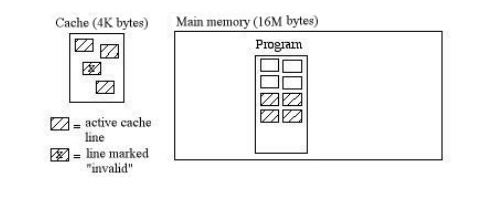Chapter: Computer Architecture : Memory and I/O Systems
Cache Basics
CACHE
BASICS
Basic Ideas
The cache is a small
mirror-image of a portion (several "lines") of main memory. cache is
faster than main memory ==> so maximize its utilization
cache is more expensive than main memory ==> so it is much smaller
Locality of reference
The principle that the
instruction currently being fetched/executed is very close in memory to the
instruction to be fetched/executed next. The same idea applies to the data
value currently being accessed (read/written) in memory.
If we keep the most
active segments of program and data in the cache, overall execution speed for
the program will be optimized. Our strategy for cache utilization should
maximize the number of cache read/write operations, in comparison with the
number of main memory read/write operations.
Example
A line is an adjacent
series of bytes in main memory (that is, their addresses are contiguous).
Suppose a line is 16 bytes in size. For example, suppose we have a 212=
4K-byte cache with 28 = 256 16-byte lines; a 224 =
16M-byte main memory, which is 212 = 4K times the size of the cache;
and a 400-line program, which will not all fit into the cache at once.

Each active cache line
is established as a copy of a corresponding memory line during execution.
Whenever a memory write takes place in the cache, the "Valid" bit is
reset (marking that line "Invalid"), which means that it is no longer
an exact image of its corresponding line in memory.
Cache Dynamics
When a memory read (or fetch) is issued by the CPU:
1.
If the line with that memory address is
in the cache (this is called a cache hit), the data is read from the cache to
the MDR.
2.
If the line with that memory address is
not in the cache (this is called a miss), the cache is updated by replacing one
of its active lines by the line with that memory address, and then the data is
read from the cache to the MDR.
When a memory write is issued by the CPU:
1.
If the line with that memory address is
in the cache, the data is written from the MDR to the cache, and the line is
marked "invalid" (since it no longer is an image of the corresponding
memory line
2.
If the line with that memory address is
not in the cache, the cache is updated by replacing one of its active lines by
the line with that memory address. The data is then written from the MDR to the
cache and the line is marked "invalid."
Cache updating is done in the following way.
1.
A candidate line is chosen for
replacement using an algorithm that tries to minimize the number of cache
updates throughout the life of the program run. Two algorithms have been
popular in recent architectures:
- Choose
the line that has been least recently used - "LRU" for short (e.g.,
the PowerPC)
- Choose
the line randomly (e.g., the 68040)
2.
If the candidate line is
"invalid," write out a copy of that line to main memory (thus
bringing the memory up to date with all recent writes to that line in the
cache).
3.
Replace the candidate line by the new
line in the cache.
Related Topics